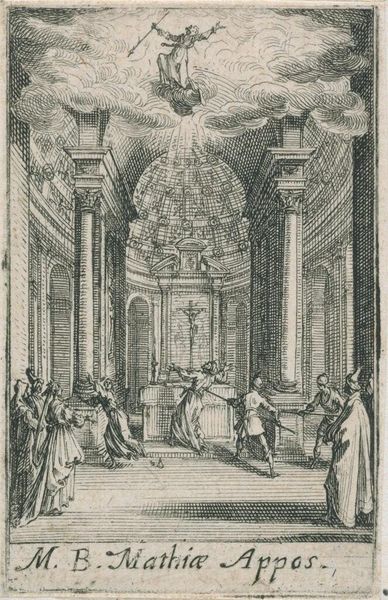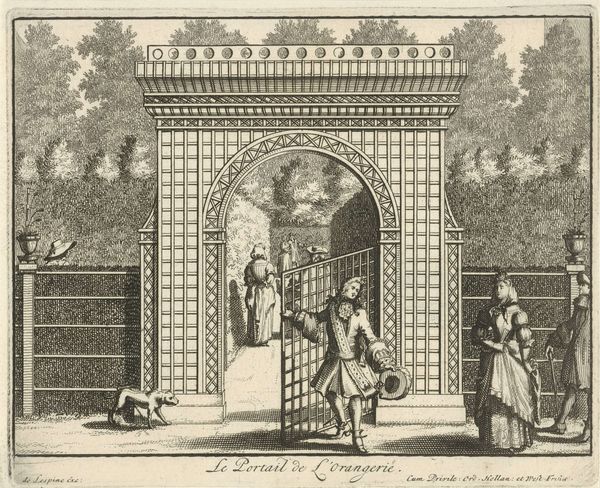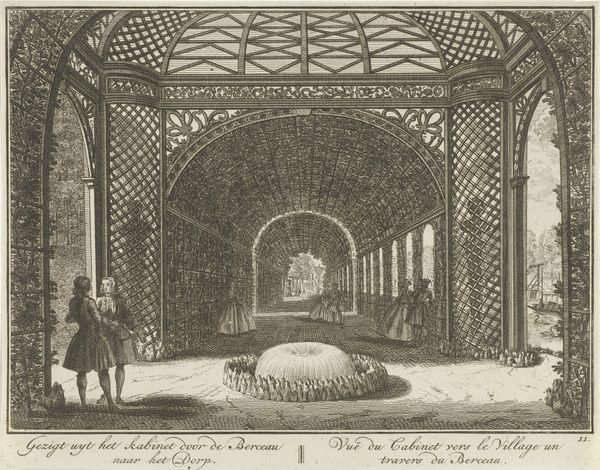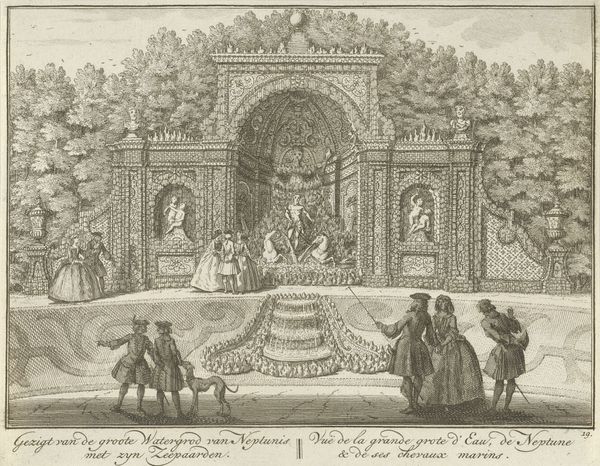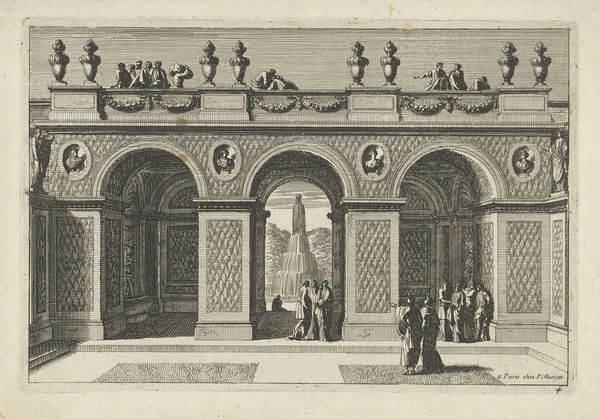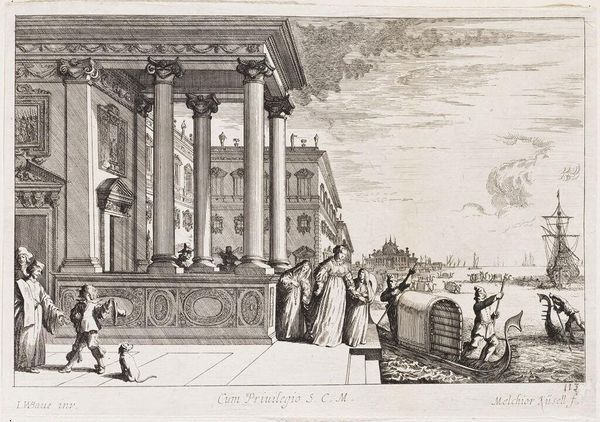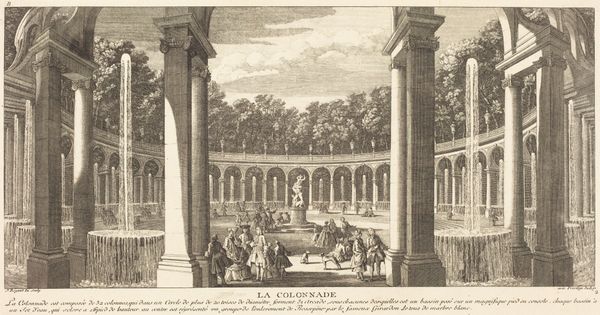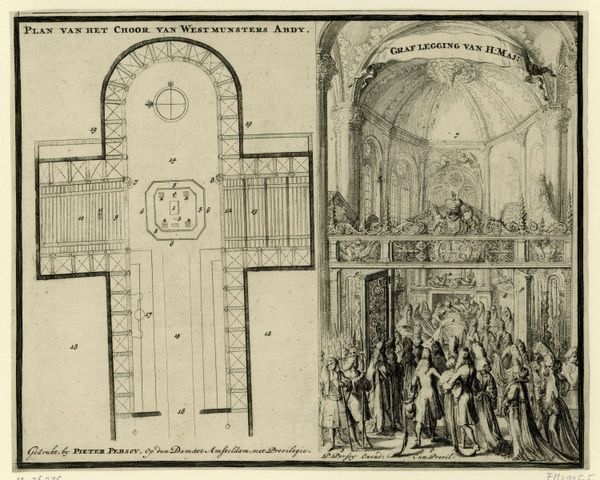
print, engraving
#
baroque
# print
#
landscape
#
genre-painting
#
engraving
Dimensions: height 130 mm, width 161 mm
Copyright: Rijks Museum: Open Domain
Curator: What a delightful scene! Joseph Mulder's "Arbor in the Garden of Castle Gunterstein, Breukelen," created between 1680 and 1696, transports me. It's a lovely engraving held here at the Rijksmuseum. There's a sort of gentle elegance about it. Editor: Elegant is a word, but what strikes me first is the formality. Everyone seems posed, contained—even the little dog looks like he's following a script! There’s a carefully constructed power dynamic at play in this so-called pleasurable garden scene, with all that leisure facilitated by labor hidden from view. Curator: Absolutely, it’s theatrical, staged. The artist focuses on these figures gathered within this sort of architectural cage in the garden. Perhaps they are there to perform or observe, within a frame that’s designed for…confinement? Editor: "Arbor" indeed. I see that confinement expressed in every element – from the tight grid of the arbor itself, to the meticulously shaped foliage and even the composition that seems to compress all figures within the middle of the frame. This kind of planned garden space was a status symbol, wasn’t it? A deliberate performance of wealth and power meant to exclude those deemed undesirable. Curator: You’re quite right. Mulder isn't just showing us a pleasant afternoon. It’s Baroque after all, the era of high drama and intentional visual display! There's a dialogue here, too, between natural elements—the topiary and such—and very, very deliberate structure. It’s beauty orchestrated, almost regulated. Editor: And it begs the question: whose beauty gets celebrated, and at what cost? This image feels like a snapshot of privilege carefully cultivated in this enclosed world, and what strikes me the most is, whose story is not being told. We have the power to tell that story now. Curator: I think that is exactly right. This print lets us peer into a highly manicured world—with an ironic touch of something a little dark around the edges. Editor: Perhaps it lets us also appreciate the enduring role of art in holding up a mirror—not just to beauty, but also to the structures of power that shape our perceptions and spaces even now.
Comments
No comments
Be the first to comment and join the conversation on the ultimate creative platform.


